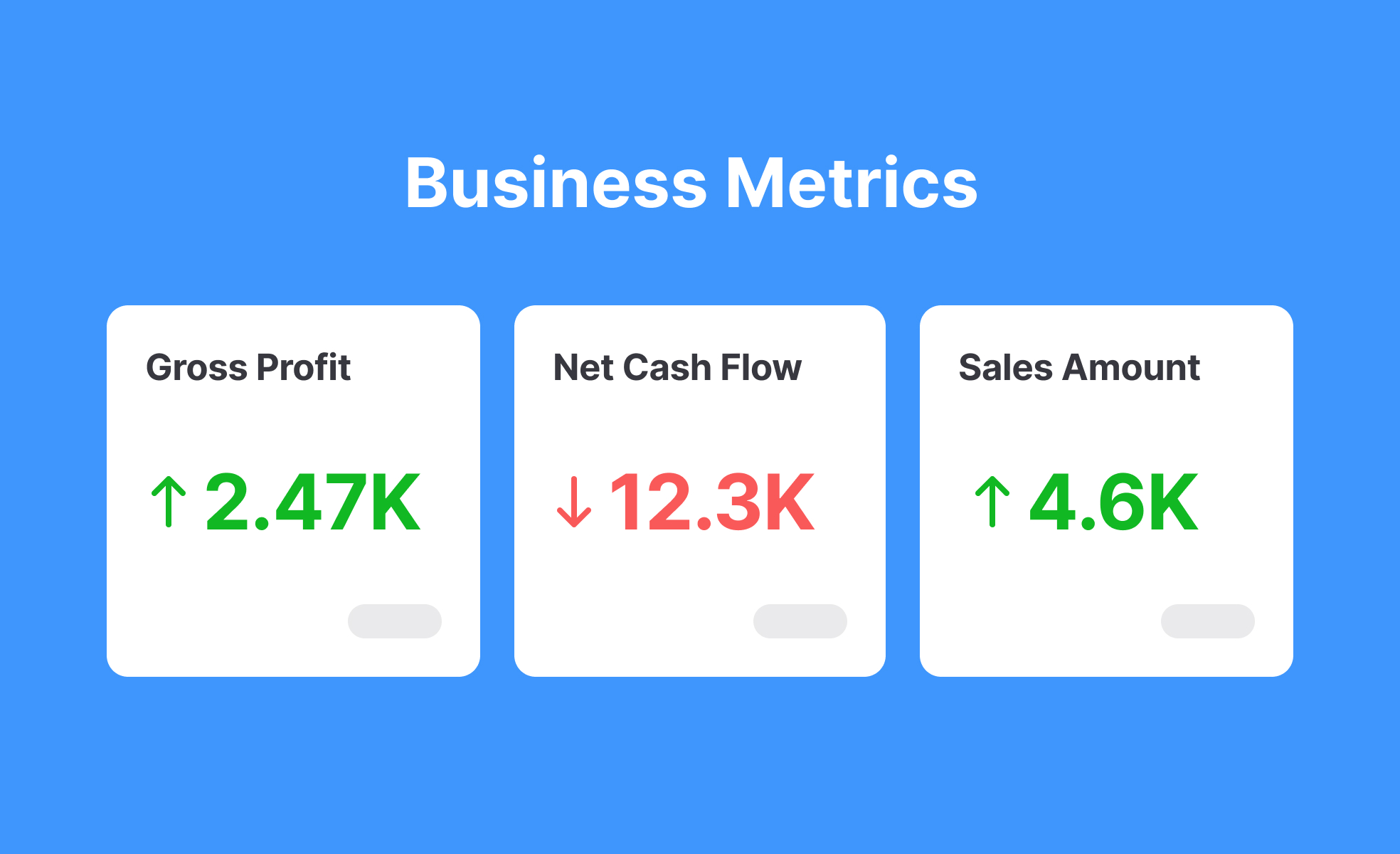Business & Growth Metrics
Business and growth metrics measure product performance and user engagement to inform strategic decisions.

What are Business & Growth Metrics?
Business and growth metrics are measurable values that track company performance, evaluate strategic success, and guide decision-making across different areas of operation. These include financial indicators (revenue, profitability), customer metrics (acquisition, retention), operational measures (efficiency, productivity), and growth indicators (market expansion, scaling velocity) that together reveal business health and trajectory.
Modern metrics encompass traditional financial reporting, digital analytics, customer success measurement, and predictive indicators that help organizations understand past performance while anticipating future trends.
Product Manager Metrics Applications
Product managers translate feature decisions and user experience improvements into measurable business impact across multiple areas of responsibility.
Feature prioritization and roadmap planning
Use leading and lagging indicators to guide development resource allocation. Pinterest prioritizes features based on projected impact on Monthly Active Pinners, their north star metric that correlates with long-term business value and user engagement.
Success measurement and performance tracking
Define feature-specific KPIs that connect product improvements to business outcomes. Spotify measures Discover Weekly success through unique listener count and average streaming duration, not just total plays or session counts.
Budget justification and resource allocation
Support headcount and investment requests with projected metric improvements. Amazon's "Working Backwards" documents require specific metric impact predictions before any major project receives approval and resources.
Essential Business Metrics Framework
Financial performance indicators:
- Revenue metrics: Monthly recurring revenue, annual run rate, growth rate, revenue per customer
- Profitability measures: Gross margin, EBITDA, contribution margin, unit economics
- Efficiency ratios: Customer acquisition cost, lifetime value, CAC payback period
- Cash flow indicators: Burn rate, runway projection, cash conversion cycle, working capital
Customer success and engagement metrics:
- Acquisition indicators: New customer growth, channel effectiveness, conversion rates
- Activation measurements: Time to first value, onboarding completion, feature adoption
- Retention analysis: Churn rates, cohort retention, Net Promoter Score, satisfaction
- Engagement depth: Daily/monthly active users, session duration, feature utilization
Growth and market metrics:
- Market position: Total addressable market, market share, competitive positioning
- Growth velocity: Growth rate sustainability, customer base expansion, geographic spread
- Efficiency measurement: Growth efficiency score, Rule of 40 calculation, marketing ROI
- Scaling indicators: Marginal customer acquisition cost, contribution margin trends, operational leverage
Operational performance metrics:
- Product quality: Release velocity, defect rates, uptime percentage, performance benchmarks
- Team effectiveness: Productivity measures, cycle time, throughput, employee satisfaction
- Process optimization: Waste reduction, automation gains, error rates, quality improvements
- Innovation tracking: Experiment velocity, success rates, pipeline development, R&D ROI
Business metrics are quantifiable measures that organizations use to track, monitor, and assess the success of various business processes. These metrics provide insight into how well a company is achieving its objectives, whether those objectives are related to sales, marketing, customer satisfaction, financial performance, or operational efficiency. By analyzing business metrics, companies can make data-driven decisions, identify areas for improvement, and align their strategies with their goals.
Business metrics provide a clear picture of how well a company is performing in different areas. They help businesses track progress towards goals, make informed decisions, and identify areas where adjustments are needed. Without metrics, it would be challenging to determine whether strategies are effective or where resources should be allocated. Metrics also enable companies to benchmark their performance against competitors and industry standards, ensuring they stay competitive.
Key business metrics vary depending on the industry and business objectives, but some common examples include:
- Revenue Growth Rate: Measures how quickly a company’s revenue is increasing over time.
- Customer Acquisition Cost (CAC): The total cost of acquiring a new customer.
- Net Promoter Score (NPS): Gauges customer satisfaction and loyalty by asking how likely customers are to recommend the company.
- Gross Profit Margin: Indicates the percentage of revenue that exceeds the cost of goods sold.
- Employee Turnover Rate: Tracks the rate at which employees leave the company.
Choosing the right business metrics depends on your specific goals and what stage your business is in. Start by identifying your key objectives—whether they’re related to growth, customer satisfaction, financial health, or operational efficiency. Then, select metrics that directly align with these goals. It’s also important to consider the industry you’re in, as different industries may prioritize different metrics. Regularly review and adjust the metrics you track as your business evolves to ensure they remain relevant to your objectives.
Recommended resources
Courses

Psychology Behind Gamified Experiences

Product Analytics

KPIs & OKRs for Products
Lessons

Showing Progress

Organizing UX Research

Business Outcomes vs. Product Outcomes
Exercises
Projects

Dreamweaver

HappySense App - Case Study













